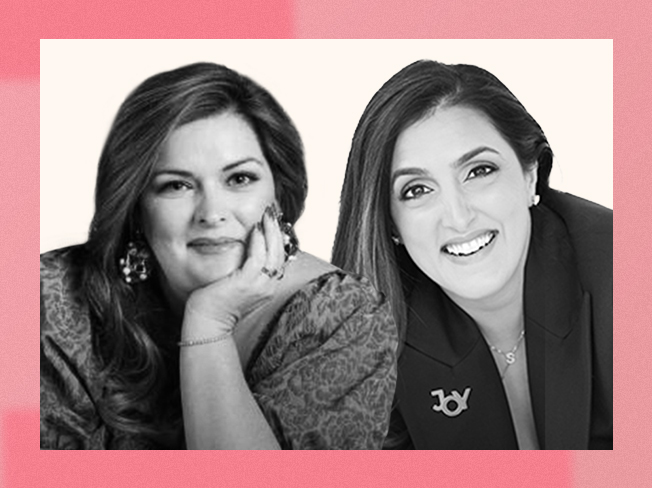Small Business Brand Partnerships | Tory Burch Foundation
Marketing experts explain how to bridge the brand partnerships that will introduce you to new audiences.
Link copied to clipboard
Did the Crocs and KFC partnership stop you in your tracks? Did The North Face and Gucci collaboration make you think about both brands in a new light? That’s the power of an unexpected yet organic partnership–it sparks conversation and allows prospective consumers to engage with your brand in new ways. Whether you’re an established brand or a company just getting off the ground, you need a brand partnerships arm of your business to cut through marketing noise and build new revenue streams.
WHY ARE BRAND PARTNERSHIPS IMPORTANT?
Brand partnerships serve different purposes for every brand. But as a whole, they should:
- Raise general brand awareness and grow your customer base
- Generate revenue, whether that’s by consumers being interested in the brand partnership and thus making a purchase, or because your brand partners are paying in order to work with you)
- Be a cost-effective marketing strategy for you. You need to rely on your partner brand’s reach while paying less than you might on Facebook advertising, for instance.
- Generate leads and drive subscribers
- Drive press and social chatter
- Demonstrate your brand’s unique personality
MAJOR KINDS OF BRAND PARTNERSHIPS
There are several types of brand partnerships but these are the most common.
Strategic Partnerships
In these types of partnerships, no money is exchanged between the brands. Rather, two brands come together to mutually benefit one another. Here, each brand comes to the table with something that’s of interest to the other partner, that’s of comparable value. An example here are some of the social giveaways that you might see on Instagram. Typically in social giveaways, 2-4 brands team up to provide a suite of product or offerings to a prize winner in exchange for entrants offering their email address or following the brands on social. Brands team up on social giveaways in order to make the gift as enticing as possible, increase entrants and to leverage each other’s social followings for cross-promotion.
Revenue-driving Brand Partnerships
One brand pays money to another in exchange for a brand partnership service. These services might include traditional media/ad space, newsletter integration, custom social content, live or virtual events, etc. The past few years we’ve seen the industry shift into more custom and bespoke brand partnerships.The most obvious examples are brand sponsorships that you see when you watch an NBA game or attend a festival like Coachella or The New Yorker Festival. Less obvious examples might be if you see your favorite shampoo or conditioner in the bathroom of your gym–those brands may have paid for their product to be integrated.
Typically, the brand who has the revenue (we’ll call them Brand A) will have very specific objectives that they need the brand receiving the money (Brand B) to hit. Sometimes these conversations are very clear cut where Brand A will send an RFP (a request for a proposal) to Brand B and clearly outline their goals and objectives. Brand B will use the RFP to develop very creative ideas that hit these objectives while also staying true to their own brand and audience in order to win the business and receive the funds. All of the custom activations at Coachella have been thoughtfully executed with the paying brand’s goals and objectives in mind, for example.
Licensing Partnerships
A brand may pay another brand to license their intellectual property (IP) in order to cement themselves in the cultural zeitgeist and drive sales. We see this often in the entertainment and fashion spaces. An example would be anytime you’re walking through the supermarket and see your favorite film character on a box of cookies, the cookie brand has paid a sizable amount to license that character in order to sell their product.
THINGS TO KEEP IN MIND
Something we’re asked often is how you know when you’re ready to start receiving money from brands. Typically, for younger businesses, you can start demanding capital once you have a sizable audience that’s desirable to other brands. The best thing to do is to have realistic expectations when you’re first starting your brand partnerships arm of your business. A brand typically pays a fee that’s commensurate with the deliverables of services that the other brand is providing and the size of the audience. Be careful not to get caught up in what brands might be paying large Fortune500 companies. If you are looking to command six figures from brands, focus on building a loyal and dedicated community first.
HOW TO IDENTIFY THE RIGHT PARTNERS
For brands who have marketing revenue to spend on partnerships, the best place to start is: what is the product I’m looking to amplify and which brand partner will help me tell that story best? If you’re a startup with limited budget, you could start by identifying smaller scale (and less expensive) festivals or conferences to sponsor that reach your target audience and potentially put your product in the hands of consumers at the actual event.
If you’re a brand without a marketing budget but still want to engage in partnerships–the best place to start is by working with brands that could benefit from your audience in some way. For instance, let’s say you are a startup with less than 10,000 followers but you’ve garnered a ton of press and have a cult following. You could find a brand partner that’s looking to engage with your loyal following and attract some of the press that you’ve been able to reach. Think about what your assets are and the gaps you might be able to fill for other brand partners.
HOW TO NEGOTIATE THE TERMS
It’s important to note that a partnership negotiation cycle can last anywhere from 3 months to one year. The larger the partnership (and the more revenue being spent), typically the longer the conversations will go on. The best thing to do when negotiating the terms is to put together a collaborative working document, the term sheet, that both parties use as their source of truth. We love this part of the process because it’s when all of the months of ideation are boiled into concrete deliverables that each brand will be providing the other. Once both parties align on the terms, this document can easily be dropped into a contract with the legalese upfront and the deliverables in the back.
BRING THE PARTNERSHIP TO LIFE.
This is what we call the “post-sale” or “activation” of a partnership. This means that a contract has been signed by both parties and you’re ready to hit the ground running on execution and bringing the partnership elements to life. In this phase, you’ll use your contract as a guide, but remember that things will always deviate slightly once you’re in the execution phase. The best approach is to ensure you’re having weekly status calls with both your internal teams and the brand partner you’re working with. Staying agile and nimble is the name of the game to ensure that you can pivot along the way where necessary. This is also when you can congratulate yourself–after months of negotiation, your work is hopefully out in the world for people to see. Take a moment and reflect on how far you’ve come…and then get ready to do it all over again!




